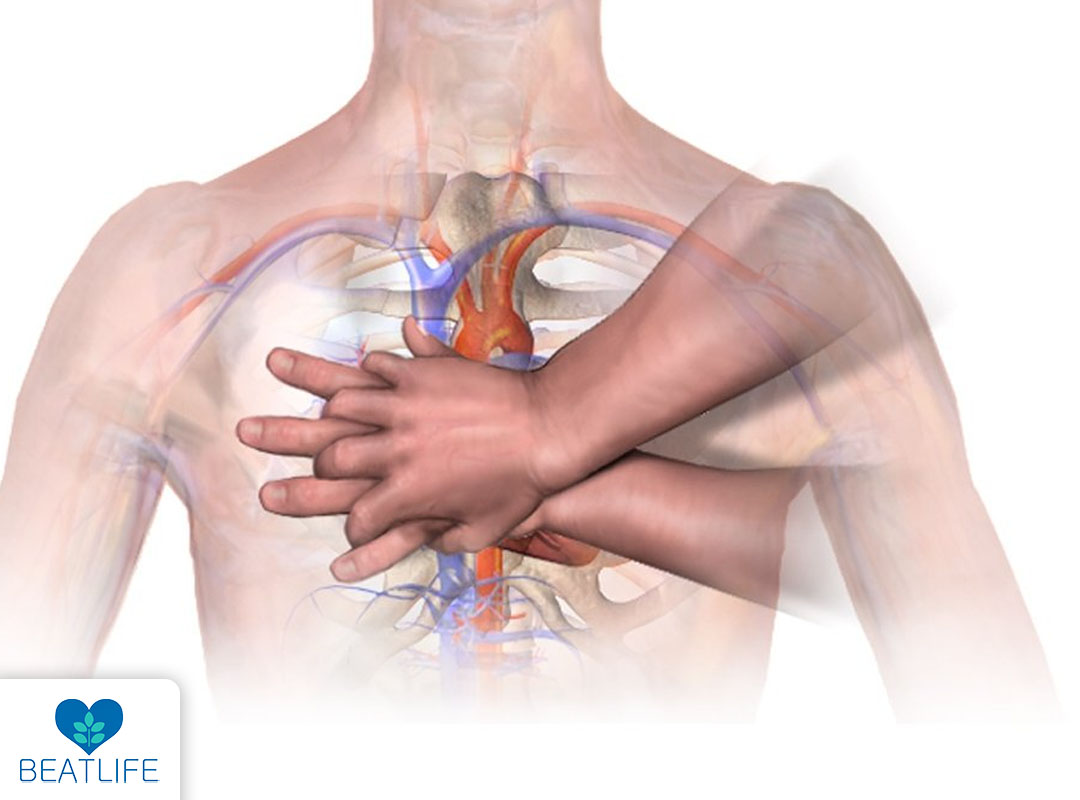Cardiopulmonary resuscitation (CPR) is a cornerstone of life-saving methods and provides hope in cardiac arrest scenarios. Complete chest recoil, however, is an important factor that is frequently overlooked. In this article, we examine the crucial significance of CPR, emphasizing the crucial role that complete chest recoil plays in effective CPR. In order to shed light on this crucial CPR component that could mean the difference between life and death, we examine its physiological significance, the effects of insufficient recoil, and strategies to maintain optimal chest expansion. Discover with us how total chest recoil works scientifically, as well as the role of using a CPRmeter in effective CPR.

How does complete chest recoil contribute to effective CPR?
In the context of efficient cardiopulmonary resuscitation (CPR), chest recoil plays a crucial function in effective CPR that offers some hope even in the most catastrophic cardiac arrest conditions. When performing CPR, the measurements of compression rate and depth frequently receive the majority of the focus. However, the idea of a full chest recoil retains its status as a crucial element within the canon of resuscitative techniques.
In order to allow the chest to achieve its maximum expansion, it precisely requires relieving all extrinsic pressure from the thoracic region throughout the inter-compression periods. By effectively aspirating blood back into the heart, this causes a negative intrathoracic pressure that promotes the diastolic refilling of the cardiac chambers. A phenomenon firmly ensconced in the domain of tissue perfusion, this mechanism essentially acts as the trigger for the revitalization of the circulatory system, aiding the favorable conveyance of oxygenated hemoglobin to the fore of the body’s key tissues and organs.
When we examine the consequences of partial chest recoil, the significant importance of complete chest recoil is further highlighted in effective CPR. Many empirical studies have attempted to solve this perplexity, and each time, they have discovered a list of unfavorable consequences that patients suffer as a result of subpar chest recoil. The complex interaction of hemodynamic measures, including coronary and cerebral perfusion pressures, mean arterial pressure, and myocardial blood flow, always degrades negatively in these circumstances.
The systemic blood flow dynamics are significantly hampered by even a trace of extra pressure applied or an obviously minor reduction of the chest’s expanding capacity. Such obstacles cause the heart and brain to receive dangerously compromised oxygen delivery, leaving them with insufficient oxygen, hindering resuscitative efforts, and potentially snuffing out the flicker of recovery.
For cardiac arrest interventions to be successful, complicated chest compression mechanics need to be mastered. This emphasizes the crucial value of ongoing instruction and strict application for healthcare workers, assuring the ongoing maintenance of their competency in providing high-quality CPR. Notably, the healthcare industry has embraced sophisticated tools like the CPRmeter that analyze and document compression effectiveness, including analyzing parameters for chest recoil.

What is the role of the CPRmeter in effective CPR?
The CPRmeter is essential for guaranteeing effective CPR since it gives medical professionals exact feedback and direction while they are performing chest compressions. This cutting-edge tool is intended to assess and document compression efficiency, including the crucial element of chest recoil. The CPRmeter aids professionals in maintaining the effectiveness and precision of their CPR technique by measuring the depth, rate, and completeness of chest compressions. It makes sure compressions are applied at the recommended depth and rate of 100 to 120 beats per minute, allowing for proper blood flow and tissue perfusion.
CPR is undergoing a revolution thanks to a piece of modern medical equipment called the CPRmeter, developed by BEATLIFE. CPR may be successfully performed in ambulances or during patient transfers due to its excellent mobility. It can be used securely in watery environments in locations like beaches and swimming pools because of its waterproof structure, which enables it to work in water up to two meters deep. The CPRmeter’s remarkable temperature range of -30 to +50 degrees Celsius also guarantees its steady operation in difficult conditions. These unique characteristics make the CPRmeter a useful tool by offering new flexibility, durability, and adaptability to enhance the quality of CPR delivery and ultimately improve patient outcomes.
What happens if chest recoil is incomplete during CPR?
Incomplete chest recoil during CPR can lead to several detrimental outcomes. One of the primary consequences is a reduction in blood circulation. Complete chest recoil is essential for creating a negative pressure in the chest, allowing the heart to refill with blood. When this recoil is incomplete, the heart may not have sufficient time to fill adequately between compressions, resulting in decreased blood flow throughout the body. This compromised circulation diminishes the effectiveness of chest compressions and can negatively impact the chances of successful resuscitation.
Furthermore, incomplete chest recoil impairs cardiac output—the volume of blood pumped by the heart per minute. This limitation in cardiac output, coupled with reduced oxygen delivery to vital organs, can significantly lower the overall effectiveness of CPR. In emergency situations, where every second is crucial, ensuring proper chest recoil is paramount to optimizing the chances of restoring a spontaneous heartbeat and improving the patient’s outcomes during cardiac arrest.
Reviewed by Dr Jamshidi Mohammad Reza

